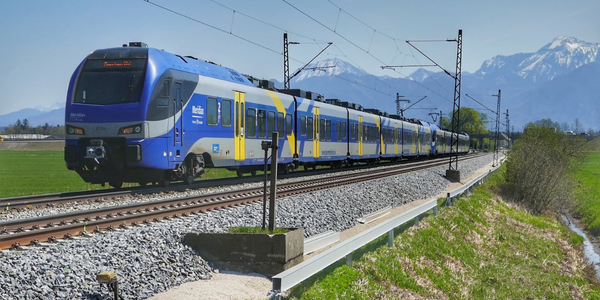下载PDF
Streamlining Reimbursement and Contract Management Processes at Metro Pacific Investments Corporation
技术
- 应用基础设施与中间件 - 事件驱动型应用
- 网络安全和隐私 - 安全合规
适用行业
- 金融与保险
- 铁路与地铁
适用功能
- 采购
- 质量保证
用例
- 租赁金融自动化
- 智能合约
服务
- 系统集成
挑战
Metro Pacific Investments Corporation (MPIC) 是一家基础设施投资控股公司,在水、电力、收费公路和医疗保健服务领域拥有广泛的项目,其费用/报销和合同管理流程面临着重大挑战。该公司的报销和费用管理流程是纸质的、手动完成的、劳动密集型的,这阻碍了财务和会计操作。存在申请放错位置或重复申请的情况,导致周转时间缓慢。此外,由于第三方审计公司的严格要求,MPIC 还需要一种能够即时审查和检索合同的解决方案。新签署的合同没有适当的工作流程供法律部门审查,并且检索这些合同以进行更新或审计是一件苦差事。
关于客户
Metro Pacific Investments Corporation (MPIC) 是一家总部位于菲律宾的基础设施投资控股公司。该公司在水、电力、收费公路和医疗保健服务等多个领域拥有广泛的项目。由于 MPIC 的运营性质,流程效率和合规性对于 MPIC 至关重要。该公司之前使用纸质、手动完成的费用/报销和合同管理流程,这些流程是劳动密集型的,并且阻碍了财务和会计操作。
解决方案
MPIC 实施 K2 软件来自动化其费用/报销和合同管理流程。系统根据成本中心自动将表单和申请发送给适当的审批者,为 MPIC 员工提供可见性和跟踪、通知和升级。对于费用/报销请求,任何 MPIC 员工现在都可以向财务和会计部门提交与公司相关的费用和报销申请以供批准。该解决方案的升级规则可以通过自动提醒来跟踪费用和报销请求,以确保满足 SLA。为了管理合同,使用 K2 Five 建立了一个门户,并为法律部门开发了一个工作流程,以便在将合同发布到门户之前彻底审查合同。该解决方案与 Microsoft SharePoint 和 InfoPath 无缝集成,允许 MPIC 的一体化系统呈现与工作流程相关的表单,使所有 MPIC 员工无论身在何处,只要可以访问互联网,就可以访问该表单。
运营影响
数量效益
相关案例.

Case Study
Real-time In-vehicle Monitoring
The telematic solution provides this vital premium-adjusting information. The solution also helps detect and deter vehicle or trailer theft – as soon as a theft occurs, monitoring personnel can alert the appropriate authorities, providing an exact location.“With more and more insurance companies and major fleet operators interested in monitoring driver behaviour on the grounds of road safety, efficient logistics and costs, the market for this type of device and associated e-business services is growing rapidly within Italy and the rest of Europe,” says Franco.“The insurance companies are especially interested in the pay-per-use and pay-as-you-drive applications while other organisations employ the technology for road user charging.”“One million vehicles in Italy currently carry such devices and forecasts indicate that the European market will increase tenfold by 2014.However, for our technology to work effectively, we needed a highly reliable wireless data network to carry the information between the vehicles and monitoring stations.”

Case Study
Building Smart IoT-Connected Railways
• Difficult environment. Communications equipment on trains must function properly in harsh conditions, such as environment temperatures ranging from -25°C to +85°C, according to the EU standard EN50155.• Railway regulations. All products in a train must adhere to strict standards, relating to working vibration, power consumption, and lifetime.• Lengthy process. Time to market in the railway industry can take years from concept to mass production, so product design requires a solid long term vision.

Case Study
Safety First with Folksam
The competitiveness of the car insurance market is driving UBI growth as a means for insurance companies to differentiate their customer propositions as well as improving operational efficiency. An insurance model - usage-based insurance ("UBI") - offers possibilities for insurers to do more efficient market segmentation and accurate risk assessment and pricing. Insurers require an IoT solution for the purpose of data collection and performance analysis

Case Study
Connected Transportation: A Smarter Brain for Your Train with Intel
A modern locomotive, for example, has as many as 200 sensors generating more than a billion data points per second. Vibration sensors surround critical components, video cameras scan the track and cab, while other sensors monitor RPM, power, temperature, the fuel mix, exhaust characteristics, and more.Most of today’s locomotives lack sufficient on-board processing power to make full use of all this data. To make matters worse, the data from different subsystems, such as the brakes, fuel system, and engine, remain separate, stored in isolated “boxes” that prevent unified analysis. The data is available, but the technology needed to process it in the most effective manner is not. As new sensors are added to the machine, the problem escalates.

Case Study
Smooth Transition to Energy Savings
The building was equipped with four end-of-life Trane water cooled chillers, located in the basement. Johnson Controls installed four York water cooled centrifugal chillers with unit mounted variable speed drives and a total installed cooling capacity of 6,8 MW. Each chiller has a capacity of 1,6 MW (variable to 1.9MW depending upon condenser water temperatures). Johnson Controls needed to design the equipment in such way that it would fit the dimensional constraints of the existing plant area and plant access route but also the specific performance requirements of the client. Morgan Stanley required the chiller plant to match the building load profile, turn down to match the low load requirement when needed and provide an improvement in the Energy Efficiency Ratio across the entire operating range. Other requirements were a reduction in the chiller noise level to improve the working environment in the plant room and a wide operating envelope coupled with intelligent controls to allow possible variation in both flow rate and temperature. The latter was needed to leverage increased capacity from a reduced number of machines during the different installation phases and allow future enhancement to a variable primary flow system.

Case Study
Automated Pallet Labeling Solution for SPR Packaging
SPR Packaging, an American supplier of packaging solutions, was in search of an automated pallet labeling solution that could meet their immediate and future needs. They aimed to equip their lines with automatic printer applicators, but also required a solution that could interface with their accounting software. The challenge was to find a system that could read a 2D code on pallets at the stretch wrapper, track the pallet, and flag any pallets with unread barcodes for inspection. The pallets could be single or double stacked, and the system needed to be able to differentiate between the two. SPR Packaging sought a system integrator with extensive experience in advanced printing and tracking solutions to provide a complete traceability system.





